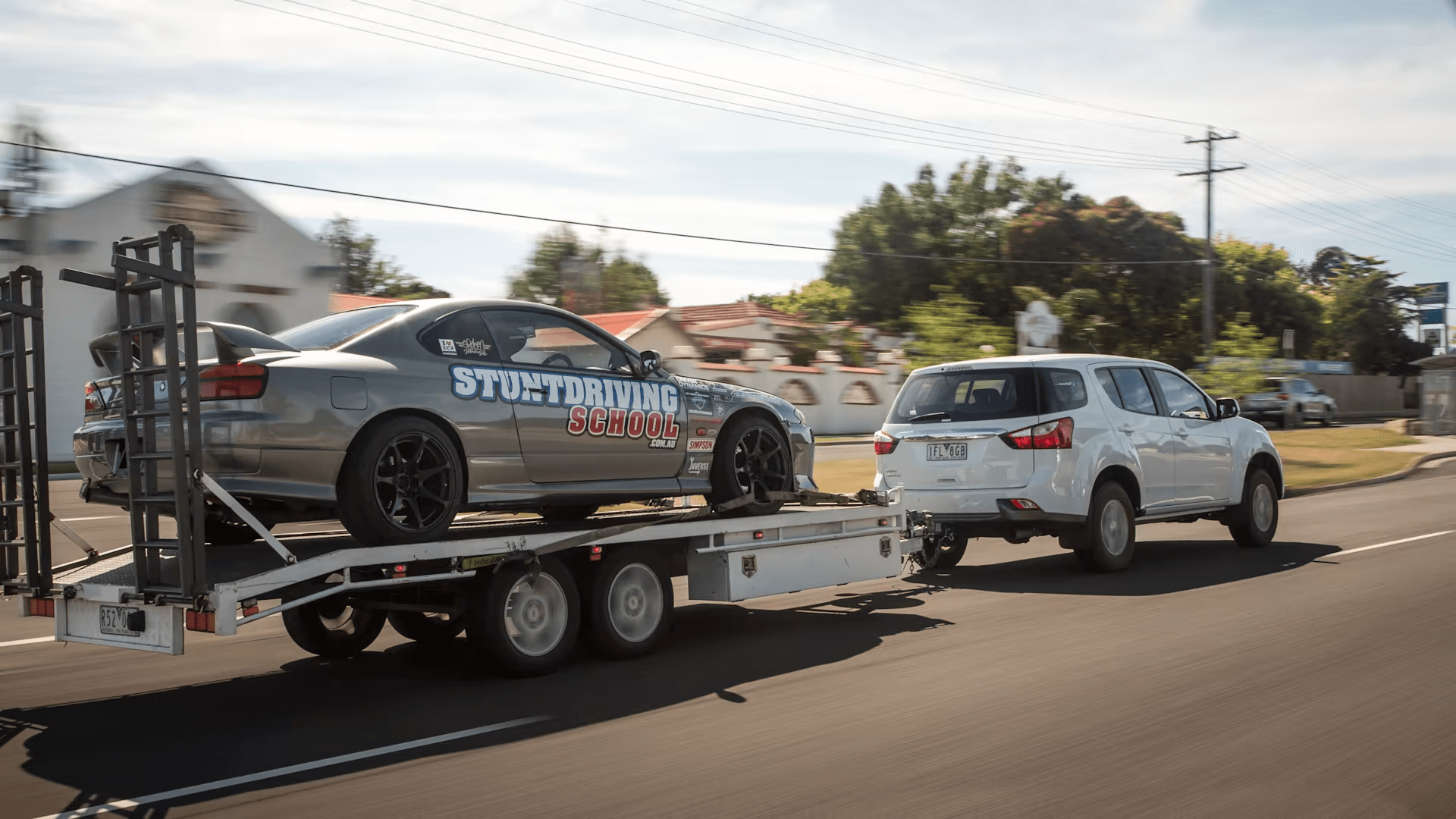I. Introduction
Navigating through the vast and diverse landscapes of Australia can be a thrilling adventure, especially when you’re transporting a vessel that promises future aquatic escapades. Welcome to Petrona Transport’s ultimate guide to safely transporting your boat across the continent, ensuring that your prized possession arrives at its destination unscathed and ready for the waters ahead.
Boat transport is not merely about moving an object from point A to B; it’s about safeguarding a vessel that might hold countless memories, future adventures, and perhaps, a significant financial investment. Understanding the intricacies of safe boat transportation becomes paramount, especially when traversing through Australia’s varied terrains and climates.
In this comprehensive guide, we will navigate through every essential aspect of boat transportation, from preparation to choosing the right transport method, ensuring legal compliance, and what to do upon arrival at your destination. Whether you’re a seasoned sailor or a novice boat owner, this guide aims to anchor your knowledge in ensuring a smooth and secure journey for your boat across the country.
If at any point you wish to explore tailored solutions for your boat transport needs, feel free to sail through our instant quote page for a swift and easy estimate.
II. Preparing Your Boat for Transport
A. Securing Loose Items
Ensuring that your boat is well-prepared for the journey ahead is the first step towards a successful transport. Begin by securing all loose items on board, which includes:
- Removing Detachable Parts: Items such as antennas, propellers, and any removable fixtures should be safely stored to prevent loss or damage during transit.
- Tying Down Movable Items: Ensure that all items within the boat, such as life jackets, cushions, and equipment, are securely tied down or stored in locked compartments.
B. Protecting the Boat
Your boat, while sturdy on the water, will face different challenges on land during transport. Here’s how you can shield it from potential damages:
- Covering and Padding: Utilize protective covers and padding to shield your boat from environmental elements and road debris.
- Sealing Openings: Ensure all doors, windows, and hatches are securely sealed to prevent water and dust ingress.
C. Documenting the Boat’s Condition
Before entrusting your boat to the transporters, it’s crucial to document its current condition:
- Taking Photographs: Capture clear images of your boat from various angles, focusing on any existing wear or damage.
- Noting Existing Damage: Maintain a written record of any current damages or issues to facilitate easy checks upon arrival.
III. Choosing the Right Transport Method
Navigating through the myriad of transport options can be a daunting task. Your boat is not just a vessel; it’s a valuable asset that demands meticulous care during transit. In this section, we’ll explore the various methods available for transporting your boat across Australia, each with its unique advantages and considerations.
A. Road Transport
1. Trailer Transport
- Personal Trailer: If your boat is small enough, utilizing your own trailer and vehicle can be a viable option. Ensure your vehicle’s towing capacity and trailer are suitable for your boat’s size and weight.
- Professional Trailer Services: For larger boats or long-distance travel, hiring a professional boat transport service, like the ones offered by Petrona Transport, ensures safety and compliance with transport regulations.
2. Professional Carriers
- Specialized Carriers: These are equipped to handle larger, heavier boats and ensure they are transported safely and efficiently.
- Custom Solutions: At Petrona Transport, we offer tailored solutions to meet your specific needs. Navigate to our instant quote page to explore personalized options for your boat transport.
B. Sea Transport
1. Using a Larger Vessel
- Freight Ships: For intercontinental travels, securing your boat on a freight ship might be the most suitable option.
- Yacht Transport Services: Specialized services that transport yachts and larger boats via sea, ensuring they are securely cradled during the journey.
2. Hiring a Professional Skipper
- Skilled Navigation: A seasoned skipper can navigate your boat to its destination, ensuring it is handled with expertise and care.
- Safety and Security: Ensure the skipper is licensed and the journey is insured to safeguard against unforeseen circumstances.
C. Rail Transport
1. Benefits and Limitations
- Eco-Friendly: Rail transport can be a more environmentally friendly option.
- Limited Routes: However, it may be subject to route limitations and may not deliver to your exact destination.
2. Preparing Your Boat for Rail Transport
- Cradling: Ensure your boat is securely cradled and immobilized to prevent movement during transit.
- Dimensions: Be mindful of the size limitations that might be imposed by rail transport services.
Choosing the right transport method is pivotal in ensuring your boat’s safe arrival at its destination. Each method comes with its own set of prerequisites, advantages, and limitations. It’s crucial to weigh these aspects against your specific needs, budget, and timeline.
IV. Legal and Compliance Requirements
Embarking on a journey across Australia with your boat in tow involves more than just plotting a course; it necessitates navigating through a sea of legal and compliance requirements to ensure a smooth and lawful transit. In this section, we’ll anchor our discussion in the vital legal aspects that you, as a boat owner, need to be cognizant of during the transport.
A. Transport Permits
1. Oversize Load Permits
- Definition: Boats exceeding standard size dimensions may be classified as an oversize load, necessitating special permits for transport on Australian roads.
- Acquisition: Engage with local transport authorities or allow a professional transport company, like Petrona Transport, to manage the permit acquisition on your behalf.
2. Special Route Permits
- Route Planning: Certain routes may require additional permits, especially when transporting larger vessels.
- Avoiding Delays: Ensuring all route permits are in order avoids potential delays and legal complications during the journey.
B. Insurance
1. Transport Insurance Options
- Comprehensive Coverage: Ensure your boat is covered for various scenarios, including damage during transit, theft, or unforeseen accidents.
- Policy Details: Be meticulous in understanding your insurance policy details, ensuring all possible scenarios are covered.
2. Claim Processes
- Documentation: Maintain thorough documentation of your boat’s condition and ensure to document any discrepancies or damages immediately upon arrival.
- Timely Claims: Familiarize yourself with the claim process and ensure any claims are filed in a timely and accurate manner.
C. Safety Regulations
1. Australian Road and Sea Safety Standards
- Compliance: Ensure the transport method adheres to Australian safety standards, including load limits, securement standards, and driver/rest periods (for road transport).
- Inspections: Be prepared for potential inspections and ensure all documentation is readily available.
2. International Safety Standards (if applicable)
- International Transport: If your boat is traversing international waters or lands, ensure compliance with international transport regulations and safety standards.
- Customs and Import/Export: Be mindful of customs regulations, ensuring all paperwork for import/export is accurately completed and submitted.
Navigating through the legal and compliance aspects of boat transport can be complex, but with meticulous preparation and adherence to regulations, you can ensure a smooth and lawful journey for your vessel.
V. Selecting a Reliable Transport Company
Entrusting your vessel to a transport company is a significant step, one that demands careful consideration and thorough vetting to ensure your boat’s safe and timely arrival. In this segment, we’ll navigate through the crucial aspects to consider when selecting a transport company, ensuring your boat is in secure and capable hands.
A. Researching Companies
1. Reviews and Testimonials
- Customer Feedback: Explore reviews and testimonials from previous customers to gauge the reliability and quality of service.
- Case Studies: Investigate any case studies or portfolios that showcase the company’s expertise and experience.
2. Certifications and Affiliations
- Accreditations: Ensure the company holds relevant certifications and adheres to industry standards. You can view our certificate of insurance here.
- Associations: Check for affiliations with reputable industry associations, which can indicate credibility and adherence to ethical practices.
B. Getting Quotes
1. Understanding Pricing
- Transparent Pricing: Ensure the company provides clear and transparent pricing without hidden costs.
- Comparative Analysis: Compare quotes from multiple providers, considering factors beyond just the cost, such as service quality and additional offerings.
2. Hidden Costs
- Inclusions and Exclusions: Understand what is included in the quote and be wary of potential additional costs, such as insurance, permits, and extra services.
- Contract Clarity: Ensure all aspects of the service and pricing are clearly outlined in the contract.
C. Contract and Agreement
1. Reading the Fine Print
- Terms and Conditions: Thoroughly read through all terms and conditions, ensuring clarity and agreement with all points.
- Liabilities and Responsibilities: Understand the company’s liabilities and your responsibilities during the transport.
2. Ensuring all Services are Listed
- Detailed Services: Ensure all agreed-upon services are detailed in the contract, from pick-up, transport, delivery, and any additional services.
- Amendments: Ensure any changes or additions to services are updated in the contract.
Choosing a reliable transport company is pivotal in ensuring your boat is treated with utmost care and professionalism throughout its journey. At Petrona Transport, we pride ourselves on providing transparent, reliable, and tailored transport solutions for your vessel. Navigate to our instant quote page to explore our offerings and obtain a straightforward estimate for your transport needs.
VI. Preparing for the Journey
Ensuring a smooth and secure transport for your boat involves meticulous preparation and a well-charted plan for the journey ahead. In this section, we’ll explore the essential steps and considerations in preparing both your boat and yourself for the transport, ensuring all bases are covered for a seamless experience.
A. Creating a Checklist
1. Pre-Transport Checklist
- Maintenance Check: Ensure your boat is in optimal condition, addressing any maintenance needs prior to transport.
- Inventory: Create an inventory of all items on the boat, ensuring all valuables are removed and stored safely.
2. During-Transport Checklist
- Tracking: Ensure you have a means to track the transport progress, whether through a tracking system or regular updates from the transport company.
- Emergency Contacts: Have a list of contacts for any emergencies or urgent communications during the transport.
B. Communication with the Transport Company
1. Establishing Contact Points
- Primary Contact: Ensure you have a primary contact person within the transport company for all communications.
- Availability: Confirm the availability and preferred communication channels of your contact person.
2. Regular Updates
- Progress Reports: Establish a system for receiving regular updates on the transport progress.
- Check-Ins: Determine specific check-in points or milestones where you’ll receive detailed updates on the transport.
C. Contingency Planning
1. Dealing with Delays
- Plan B: Have a plan for potential delays, ensuring any time-sensitive aspects are managed effectively.
- Communication: Ensure open and transparent communication with the transport company regarding any delays or changes in schedule.
2. Handling Damages or Issues during Transport
- Immediate Action: Determine the steps and contacts for reporting and managing any damages or issues that arise during transport.
- Insurance Claims: Understand the process and requirements for filing any potential insurance claims.
Preparation is key to ensuring a smooth and secure journey for your boat. With a well-charted plan, clear communication, and contingency plans in place, you can navigate through the transport process with confidence and assurance.
VII. Upon Arrival: Receiving and Inspecting Your Boat
The moment your boat reaches its destination marks a significant milestone, yet the journey doesn’t end here. Ensuring the vessel is in impeccable condition and managing post-transport processes are pivotal. In this section, we’ll navigate through the steps and considerations when receiving and inspecting your boat upon arrival.
A. Conducting a Thorough Inspection
1. Comparing against Pre-Transport Photos
- Visual Inspection: Conduct a detailed visual inspection of your boat, comparing its condition against the pre-transport photographs.
- Detailing Discrepancies: Note any discrepancies or potential damages that may have occurred during transport.
2. Checking for Damages
- Structural Check: Ensure the structural integrity of the boat has been maintained, checking for any new dents, scratches, or damages.
- Internal Check: Inspect the internal components and compartments of the boat to ensure no damages or losses have occurred.
B. Unloading and Setup
1. Safe Unloading Practices
- Professional Assistance: Ensure professionals handle the unloading process to prevent any damages during offloading.
- Stabilizing: Ensure the boat is stabilized and secured once offloaded to prevent any accidental movements or damages.
2. Reassembling Detachable Parts
- Reattachment: Reattach any parts that were removed for the transport, ensuring they are securely and correctly installed.
- Functionality Check: Ensure all reattached parts and components are functioning correctly.
C. Post-Transport Maintenance
1. Cleaning and Maintenance Tips
- Cleaning: Conduct a thorough cleaning of the boat, removing any dirt or residues from the transport.
- Maintenance Check: Perform a detailed maintenance check to ensure all systems are functioning optimally.
2. Checking for any Mechanical Issues
- Engine Check: Ensure the engine and mechanical systems are in optimal condition and address any issues immediately.
- Safety Check: Ensure all safety systems and components are functioning correctly before taking the boat into the water.
Receiving and inspecting your boat with meticulous attention ensures that any potential issues are identified and addressed promptly. This ensures your vessel is ready for its next adventure, providing you with peace of mind and assurance in its condition and functionality.
IX. Conclusion
Navigating your boat across the vast and diverse landscapes of Australia can be a complex journey, yet with meticulous planning, understanding of legalities, and partnering with a reliable transport company, it can be a smooth and secure voyage.
From preparing your boat, choosing the right transport method, ensuring legal compliance, to managing the journey and post-transport processes, every step demands careful consideration and action.
Whether you’re a seasoned sailor or embarking on your first boat transport, Petrona Transport is here to navigate alongside you, ensuring your vessel is handled with utmost care and professionalism. Explore our tailored solutions and obtain an instant quote for your boat’s journey across Australia.





